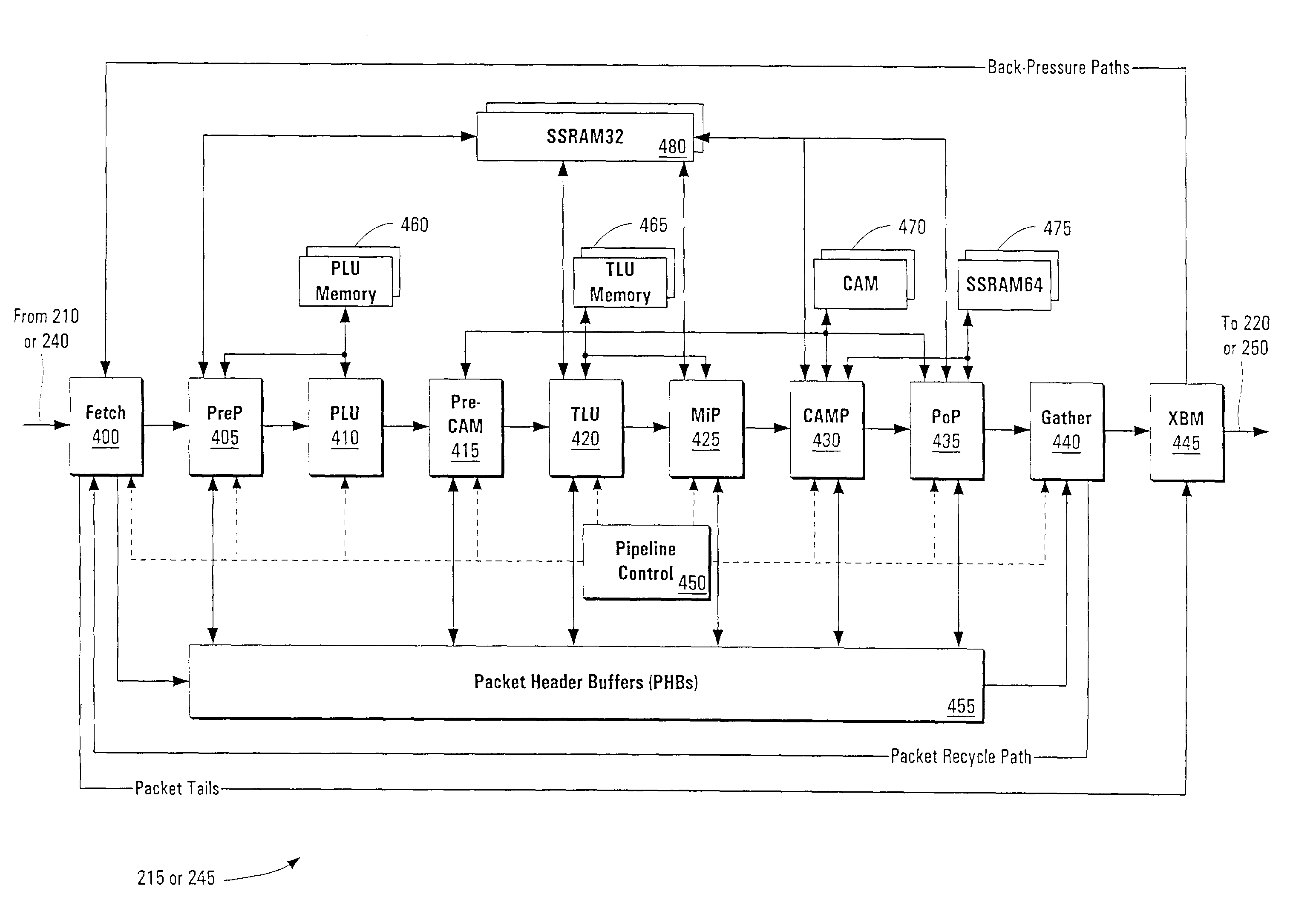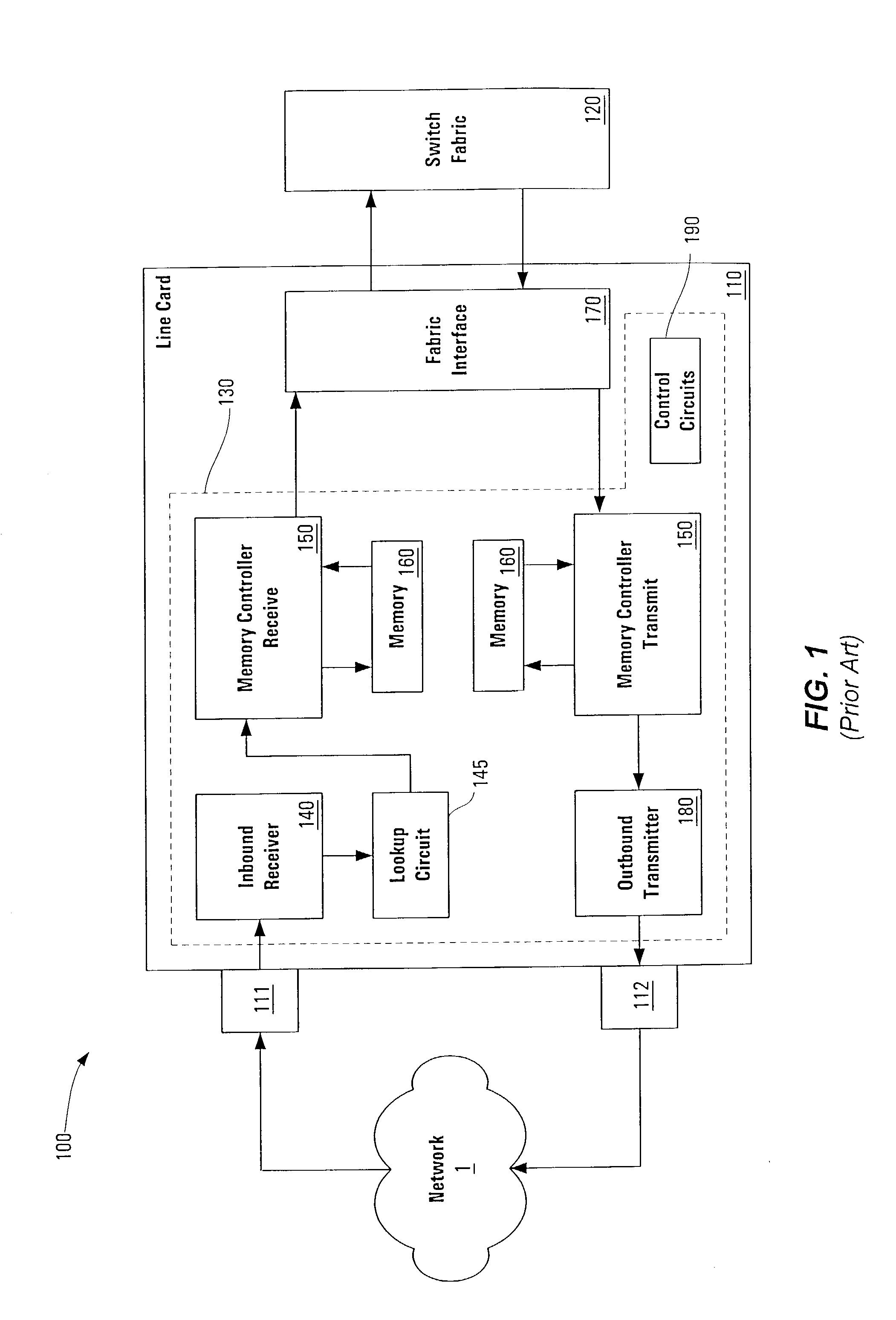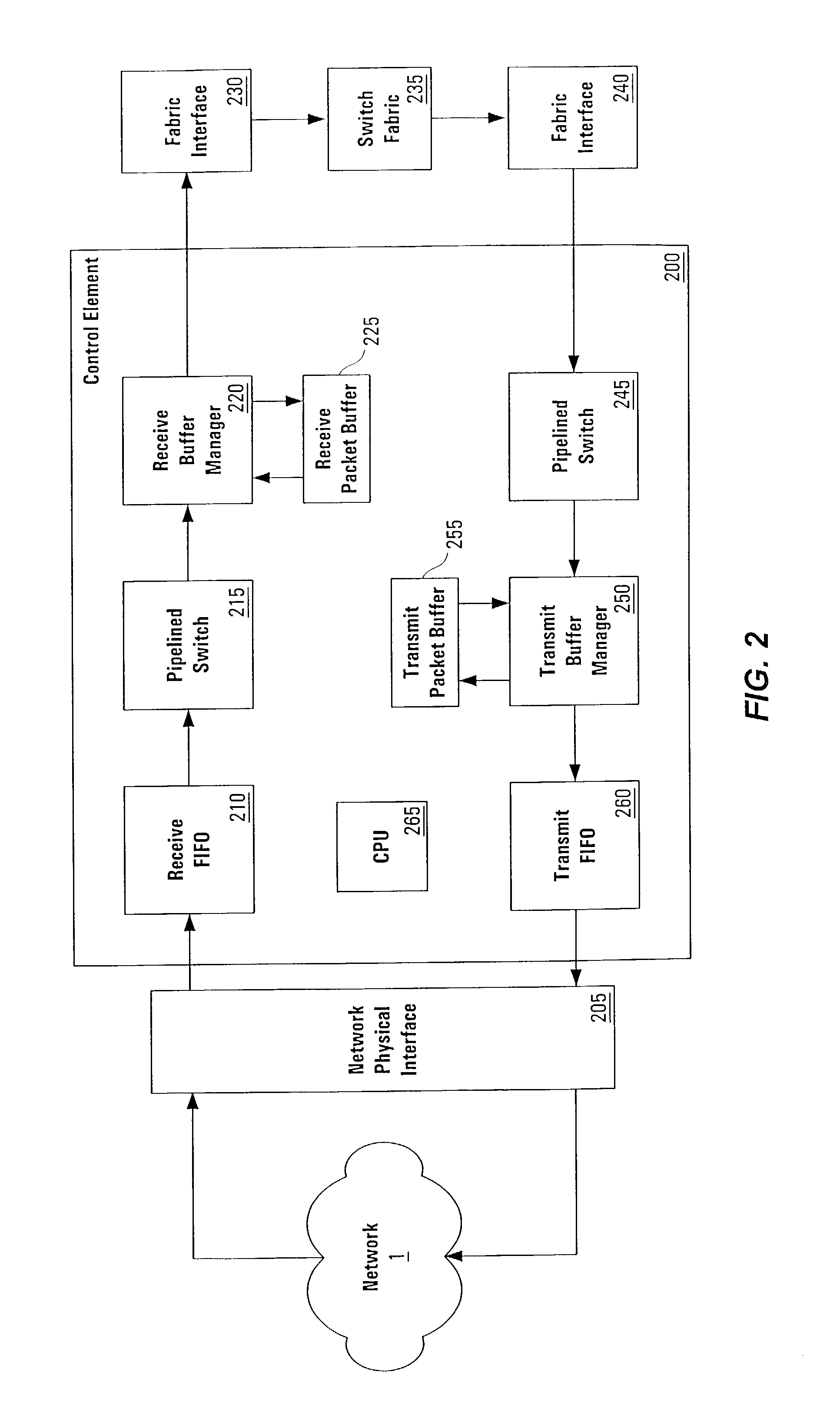Pipelined packet switching and queuing architecture
a packet switching and queuing technology, applied in the field of communication devices, can solve the problems of inability of a general purpose digital computer to perform the necessary lookup and queue management functions using software in real time, lack of flexibility in prior art systems tuned for hardware speed, and inability to meet the demands of modern internetworking systems. achieve the effect of rapid implementation of new features and capabilities, and high throughpu
- Summary
- Abstract
- Description
- Claims
- Application Information
AI Technical Summary
Benefits of technology
Problems solved by technology
Method used
Image
Examples
Embodiment Construction
[0057]The following sets forth a detailed description of at least the best contemplated mode for carrying out the one or more devices and / or processes described herein. The description is intended to be illustrative and should not be taken to be limiting.
[0058]The present invention is an architecture for a linecard in a network communications device such as a router or switch. The linecard provides an interface between a routing or switching device and a network that operates bi-directionally, both receiving a data stream (e.g., packets) from the network and transmitting a data stream to the network. Typical devices comprise multiple linecards (and thus multiple network connections) and a single switching interconnect core or “fabric” that provides the physical connection between linecards.
[0059]Among the more desirable “edge” features that can be supported by the systems and methods of the present application are: access control lists (ACLs) or extended access control lists (Ex-ACL...
PUM
 Login to View More
Login to View More Abstract
Description
Claims
Application Information
 Login to View More
Login to View More - R&D
- Intellectual Property
- Life Sciences
- Materials
- Tech Scout
- Unparalleled Data Quality
- Higher Quality Content
- 60% Fewer Hallucinations
Browse by: Latest US Patents, China's latest patents, Technical Efficacy Thesaurus, Application Domain, Technology Topic, Popular Technical Reports.
© 2025 PatSnap. All rights reserved.Legal|Privacy policy|Modern Slavery Act Transparency Statement|Sitemap|About US| Contact US: help@patsnap.com



